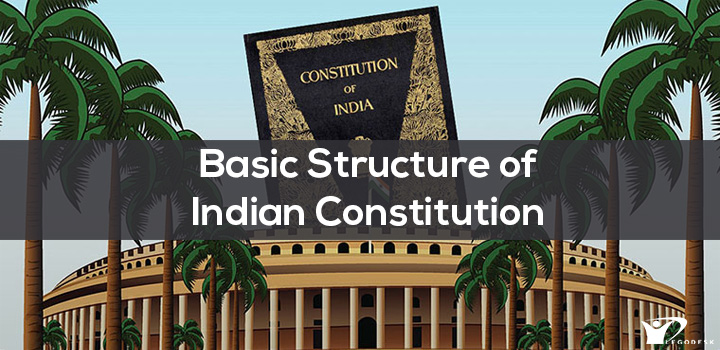
- The basic structure doctrine is an Indian judicial principle that the Constitution of India has certain basic features that cannot be altered or destroyed through amendments by the parliament. This doctrine puts restriction on amending powers of legislature guaranteed under Article 368 of Indian constitution.
- Basic structure as a doctrine was devised by Supreme Court in Kesavananda Bharati case on April 24th 1973.
- But what should be considered as the basic features of the Indian Constitution is not explicitly defined by the Judiciary. It is widely believed that democracy, federalism, secularism, independence of the judiciary, secularism etc. are part of the basic features. The claim of any particular feature of the Constitution to be a “basic” feature is determined by the Court on a case-by-case basis.
BASIC STRUCTURE DOCTRINE UNDERMINES PARLIAMENTARY SOVEREIGNTY
- Restriction on amendment powers: It restricts parliament to introduce new laws or scarp any old laws which are no more required. For instance, preamble states India has a socialist country but since 1991, India has followed capitalism in principles.
- Due process of law: Constitution established “procedure established by law” (Gopalan Case, 1950) but it was replaced by “due process of law” (Maneka case, 1978), which gives power to judiciary to scrap any laws. Even though not arbitrarily, but still it undermines the law making power of parliament.
- Against constitution: Preamble of the constitution says people are sovereign (Give to ourselves this constitution) and they passed on this power to elected representatives but judiciary has taken over to itself in name of Judicial review. For example, in the Minerva Mills case, 1980 the apex court invalidated the 42nd constitutional amendment of the parliament.
- Ambiguous in nature: There is no proper definition or ambiguity on what constitutes basic structure. With passage of time, the contents of basic structure are increasing and over time it is feared that parliament may lose its value and power to judiciary to enact and implement laws.
- There are various instances where it can be proved that judiciary has restricted parliamentary powers like in case of NJAC bill ( 99th amendment to constitution), Aadhaar bill ( diluted provisions of bill), Set aside reservations in promotion and above 50% reservation in states granted by certain state governments.
BASIC STRUCTURE DOCTRINE ENHANCES PARLIAMENTARY SOVEREIGNTY RATHER THAN UNDERMINING IT
- Check on arbitrary use of power: Judiciary does not take away amendment powers or power to make laws, it just places certain restrictions in order to enhance democratic principles. For example, in the Indira Gandhi vs Raj Narain case, 1975, the Supreme Court invalidated the Article 329A as it was beyond the amending power of the Parliament.
- Effective and efficient laws: Basic structure helps in increasing culture of debate which helps in bringing effective and efficient laws for welfare of people.
- Strengthening Democracy: Basic structure has protected and promoted democracy or else India would have become a dictatorship or taken over by armed rebellions like Pakistan, Afghanistan etc. For instance in the Kihoto hollohan Vs. Zachillhu, 1992, it was held that democracy is a part of the basic structure of our Constitution, and rule of law; and free and fair elections are basic features of democracy.
- Supremacy of constitution: It places restriction on any institution gaining immense power or power over others. It helps in maintaining supremacy of constitution and its principles.
- Political ideology: It prevents India from becoming battle ground for different ideologies or change the country according to specific ideologies or ideologies of party in power.
- Certain instances where basic structure has enhanced parliamentary sovereignty can be, Ordinance for SC/ST act to nullify SC order, placing Fundamental rights and DPSP on equal footing, Triple talaq ordinance to give effect to SC order on Triple talaq etc.
Conclusion
- India is the only country with basic structure doctrine, there has been criticism as well has appreciation for the same.
- The role played by Kesavananda Bharati case in strengthening our democracy must be appreciated and will always occupy a hallowed place in our constitutional history.
- In the spirit of parliamentary system, these two pillars of democracy – legislature and judiciary, should work collaboratively to uphold the fundamental values of our constitution.